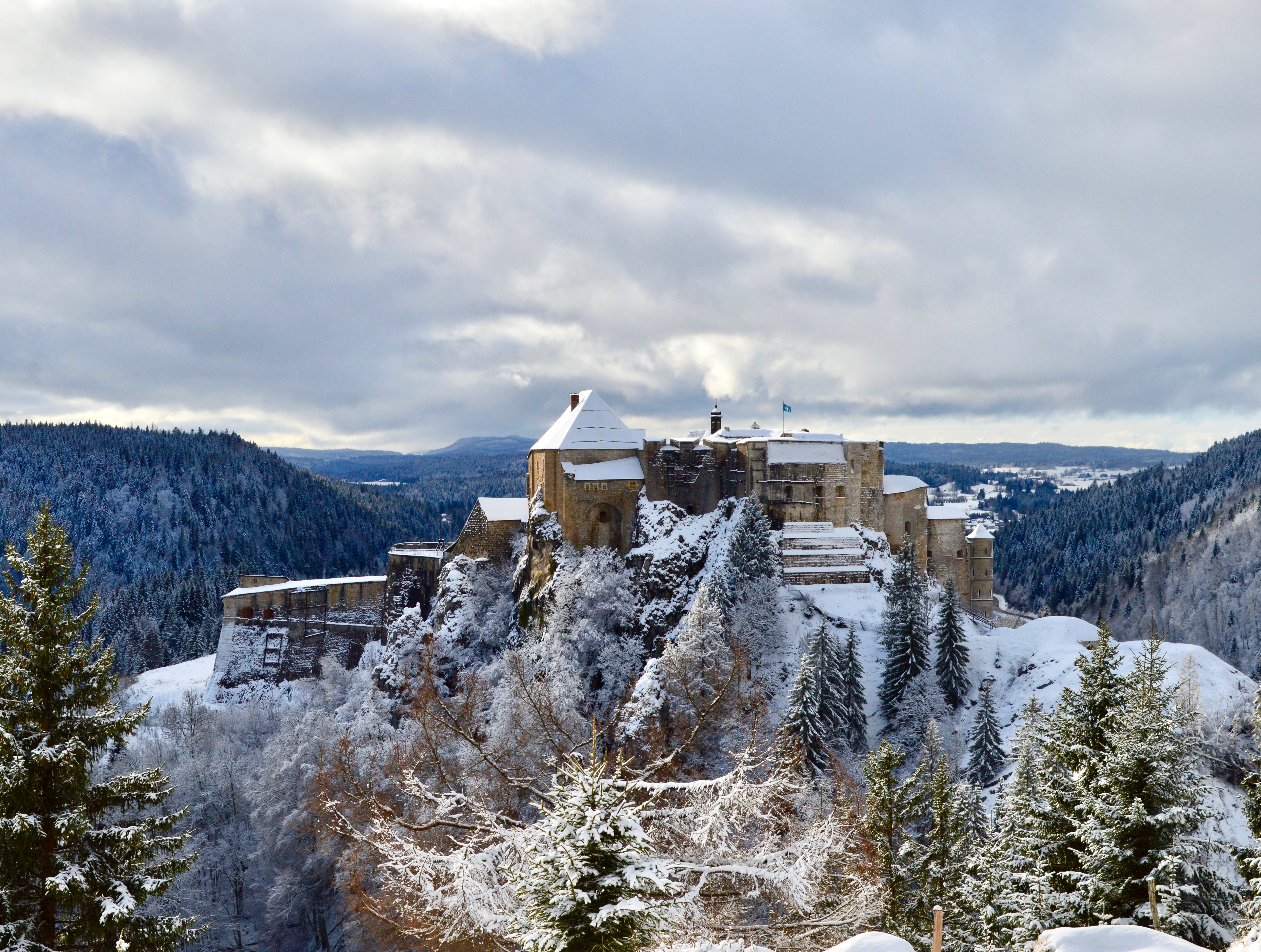The Chateau of Joux sends its regards
Part of the Franco-Prussian War commemorations
Image Source: © m.haelvoet
An outstanding testament to how military architecture developed over ten centuries, the Chateau of Joux was continually reorganised, fortified and used. As a military fortress, it played an important role in armed conflicts, including the Franco-Prussian War (1870-71).
In January 1871, an armistice was signed between France and Prussia, at war since July 1870. But eastern France was excluded from it. The Army of the Orient, led by General Clinchant, found itself driven back against the Swiss border, surrounded by the Prussians at Pontarlier. Exhausted and starving, with a metre of snow on the ground and temperatures reaching -15°C, there was only one way out: Switzerland. Clinchant negotiated an agreement for the French army’s internment on neutral Swiss soil. The disarmed French soldiers would be received by the Swiss, specifically the Red Cross. The troops began to march, taking the Cluse passage at the foot of the forts of Joux and Larmont. But the Prussians followed hot on their heels, attacking the Army of the Orient’s rearguard. The cannons of the forts, positioned strategically and concealed behind a wall of snow, retaliated in support of the French infantry. Amid the fighting, some 88 000 soldiers managed to make it into Switzerland.
The forts of Joux and Larmont remained in a state of siege until May 1871. They were not captured, but the war required the eastern border to be reinforced. The fifth outer wall of the fort of Joux was rebuilt according to the system of defences of General Séré de Rivières, in 1880.
Keep up with the latest news from the Château de Joux
Discover all of the Franco-Prussian War remembrance sites
Read all about the 150th anniversary commemorations of the Franco-Prussian War


